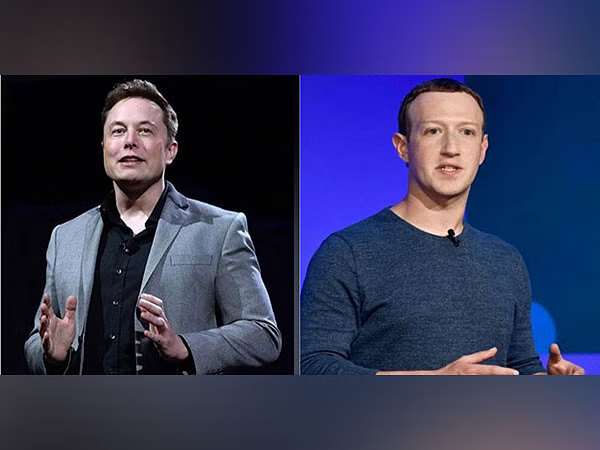In today’s fast-evolving professional terrain, attire is one of the most visible cultural divides.
A stark contrast exists between the classic corporate uniform—the suit and tie—and the laid-back hoodies, sneakers, and jeans of the tech world.
This dress code divergence is more than a matter of fashion; it’s deeply rooted in culture, values, and the philosophical underpinnings of two different approaches to work.
Tech leaders like Mark Zuckerberg, Steve Jobs, and Elon Musk have famously rejected the suit, symbolizing a broader ethos that prioritizes functionality, innovation, and individuality over formality and tradition.
The Rise of the Hoodie in Silicon Valley
Tech culture, particularly that of Silicon Valley, is founded on the principles of disruption and reinvention. These ideals extend beyond products and services into lifestyle choices, including how people dress. In the early days of tech startups, founders were often young, working out of garages or small co-working spaces, where comfort and functionality were crucial.
As the industry evolved, this casual dress culture became a badge of honor—a sign that one’s focus was on building and creating, not conforming to outdated norms. The hoodie, T-shirt, and jeans combo became synonymous with ingenuity, passion, and rebellion against the corporate establishment.
Mark Zuckerberg: Minimalism as Efficiency
Few figures exemplify this trend more vividly than Mark Zuckerberg, co-founder and CEO of Meta (formerly Facebook). Known for wearing the same gray T-shirt every day, Zuckerberg once explained his choice by saying he wanted to reduce “decision fatigue” and focus his energy on more important work-related decisions. His minimalist wardrobe, he said, was part of a broader strategy to streamline his life.
This approach mirrors the minimalism of his company’s early user interface—clean, focused, and user-friendly.
Zuckerberg’s attire reinforces his personal and professional brand: efficient, logical, and purpose-driven.
Rather than signaling disrespect or sloppiness, his dress code projects a calculated simplicity.
Steve Jobs: The Power of a Personal Uniform
Another legendary figure in tech fashion (or anti-fashion) is Steve Jobs. The late co-founder of Apple was rarely seen without his black turtleneck, Levi’s 501 jeans, and New Balance sneakers.
Jobs was influenced by Japanese minimalist design and admired the concept of a personal uniform, which he adopted for both practicality and symbolism.
His consistent attire reflected Apple’s design philosophy—elegant simplicity, intuitive functionality, and brand consistency. Just as Apple products aimed to strip away the unnecessary, Jobs’s wardrobe embodied a no-frills, hyper-focused aesthetic that became iconic in its own right.
Elon Musk: The Hybrid Approach
Elon Musk presents an interesting blend. As the CEO of multiple companies, including Tesla, SpaceX, and Neuralink, Musk sometimes dons suits for high-stakes investor meetings, government engagements, or product launches.
However, in everyday work environments, he often reverts to T-shirts and casual blazers.

Musk’s hybrid dress sense reflects his dual role as both a visionary engineer and a corporate leader. He adapts his attire based on the audience and occasion, demonstrating that while the suit still has a place, it no longer dictates authority or intellect in the tech world.
Jack Dorsey: Radical Individualism
Jack Dorsey, co-founder of Twitter and Square (now Block), takes the casual dress ethos even further. Often appearing in beanies, nose rings, hoodies, and monk-like attire, Dorsey embodies the ultra-minimalist, countercultural edge of tech fashion. Even when testifying before Congress, he retained his distinctively casual look, making a bold statement about authenticity and individualism.
Dorsey’s appearance is not just about comfort; it’s an ideological statement about rejecting societal expectations and embracing personal freedom. His attire reflects a broader trend within tech: the rejection of conformity and the elevation of the self as the brand.
The Psychological Edge: Comfort Enhances Creativity
There is growing psychological evidence that comfort can enhance cognitive performance. Tech work often requires deep concentration, problem-solving, and long hours. Suits, while visually impressive, are not designed for ergonomic comfort. In contrast, casual clothing allows tech workers to feel relaxed and focused, enabling better performance.
Moreover, a relaxed dress code fosters an environment where ideas matter more than appearances. It strips away superficial hierarchies, allowing junior developers and senior engineers to collaborate freely without the weight of formality.
Anti-Corporate Sentiment and Symbolism
The rejection of suits is also a rejection of corporate bureaucracy. Tech innovators often view traditional business structures as slow, rigid, and out of touch.
By dressing casually, they signal their distance from the politics and performative rituals of legacy industries.
This sentiment is deeply embedded in the startup ethos: move fast, break things, and focus on building value.
A suit, in this context, becomes a symbol of a bygone era—one that prioritizes appearances over outcomes.
The Startup Mentality: Frugality and Authenticity
In the startup world, especially in early stages, resources are tight and time is precious. There’s little incentive to spend on expensive suits or dry cleaning when the priority is building a product or securing funding. Founders often work late into the night, sleep in their offices, and eat ramen for dinner. The hoodie isn’t just comfortable—it’s practical.
As startups grow into unicorns, many leaders continue dressing the way they did at the beginning. This consistency communicates authenticity—”I haven’t changed; I’m still the builder, not a corporate figurehead.”
The Corporate World: Suits as Symbols of Trust
By contrast, traditional corporate environments value formal attire as a sign of professionalism, discipline, and trustworthiness.
In industries like finance, law, or politics, suits are often required to signal credibility and competence.
In these sectors, image is tightly tied to perceived value. A lawyer in jeans may raise eyebrows; a banker in a hoodie could appear unserious. The suit functions as a kind of uniform, conveying respect, seriousness, and alignment with professional norms.
The Contrast in Practice
Tech leaders like Zuckerberg and Jobs often choose hoodies, jeans, and sneakers as their daily attire.
They value innovation and output over appearances, working in flat organizational structures with casual meetings and open-floor collaborations. Their dressing is optimized for comfort and utility.
On the other hand, traditional executives in sectors such as Wall Street or big law firms adhere to a more formal dress code, typically featuring suits, ties, and polished shoes.
They emphasize hierarchy, structured boardroom formalities, and dress to impress or convey status.
This contrast in attire reflects broader differences in work culture, priorities, and what each environment deems important for professional success.
When Tech Leaders Do Wear Suits
It’s worth noting that tech leaders are not categorically against suits. They do wear them, but strategically. For example, during IPO roadshows, government hearings, or international summits, tech CEOs often dress up to align with audience expectations.
This strategic use of formal wear reflects an evolution rather than a revolution. Tech leaders understand the symbolism of the suit and deploy it when necessary, without letting it define them.
Gen Z and the Future of Work Fashion
As younger generations enter the workforce, the lines between casual and formal dress are continuing to blur. Gen Z, raised in the age of social media, gig economy, and startup culture, prioritize authenticity and comfort.
Hybrid work models and remote jobs have accelerated the shift. In virtual meetings, the pressure to dress formally is lower. Many professionals now embrace “Zoom formal” attire—a neat shirt on top and sweatpants below. This trend underscores a broader move toward performance-driven evaluation rather than image-based judgment.
Fashion, Identity, and Professional Freedom
Ultimately, clothing is an expression of identity. In tech, that identity is often tied to values like creativity, efficiency, individualism, and innovation. Dressing down is not laziness; it’s a deliberate embrace of a new kind of professional freedom.
By contrast, traditional sectors have yet to fully detach from the visual cues of authority and trust. But even here, changes are underway. Some law firms and investment firms now allow “dress for your day” policies, acknowledging that flexibility matters.
Beyond the Suit and Hoodie
The difference between tech and corporate dress is not just stylistic; it’s philosophical. It reflects how each culture defines leadership, productivity, and success.
The hoodie represents a world where value is created through innovation and merit. The suit represents a world where tradition, image, and structure still hold sway.
Neither is inherently superior. Both serve different needs, audiences, and goals. But one thing is clear: the future of professional attire is likely to be more inclusive, diverse, and driven by individual values rather than one-size-fits-all expectations.
As the world of work continues to evolve, perhaps the real question isn’t “Why don’t tech guys wear suits?” but rather, “How can professional attire adapt to reflect the values of a changing world?”

